Summary
To protect your vegetable garden from frost, take the following steps:
- Choose the best varieties for your climate
- Plant at the right time according to your growing zone
- Cover your vegetables with floating row cover (and old sheets), cloches, or cold frames
- Water appropriately
- Mulch appropriately
I have a photograph taken about 5 years ago at my home in Calgary, Alberta. In it, I am wearing a thick turtleneck sweater and surrounded by several large containers of tomatoes organized into every shade of green, yellow, orange, and red an unripe tomato can be.
It was September 8th. Snowfall and hard frost were imminent.
The cold would’ve irreparably damaged the tomatoes if I hadn’t harvested them that day.
Imagine all that work gone to waste!
I did manage to get them all in and spent the next several weeks ripening and using them, but it wasn’t the kind of tomato harvest you hope for. Sometimes, that’s just how it goes, though (but I am thankful that’s unusual).
This is the reality of what you and your vegetables (or fruits treated like vegetables) face in temperate climates.
My guess is you already know this, though, which is why you’re here.
And I’m glad you’re here.
You should never have to lose your hard work (or your food, no less!) due to something you can prepare for, even something difficult like frost.
So, let’s dive into what you can do to protect your vegetable garden from frost. The good news is these are the best tips and quickest methods gardeners commonly use, so you’ll be able to implement them quickly, too.
And when that next spring or fall forecast threatens to tip temperatures past your plants’ comfortable range, you’ll know exactly what to do and be prepared to make it happen.
Spring and fall are the seasons when you need to be vigilant about frost protection. While some frost protection methods are the same for both seasons, plants are at different stages of growth, so there are a few things that are different to consider, too.
Let’s start with how to choose the best variety of what you want to grow.
1 – Choose The Best Varieties For Your Climate
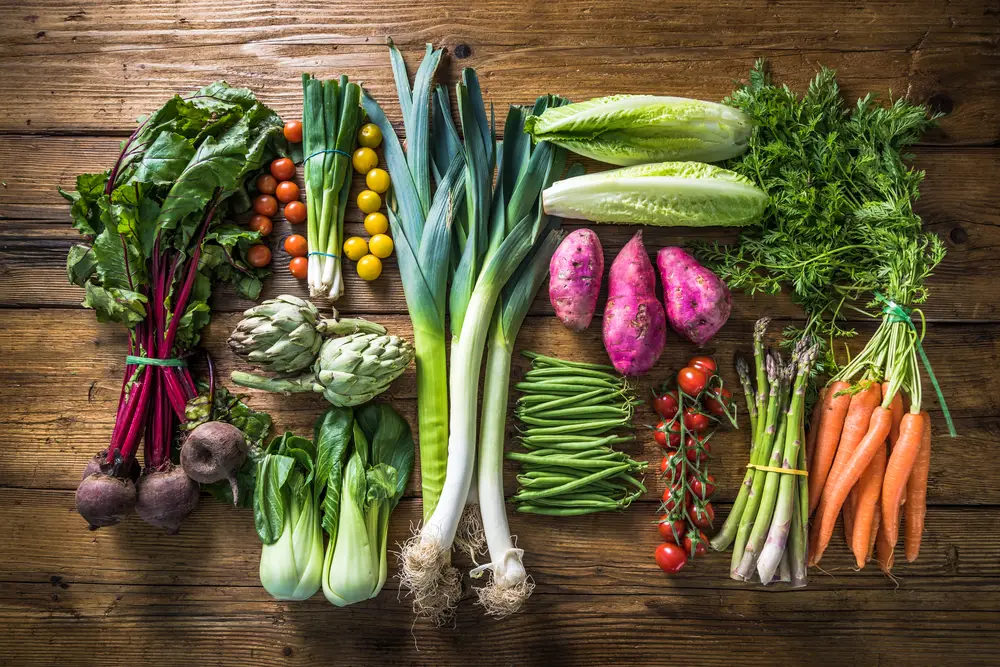
When you are selecting which vegetables to plant and grow in your vegetable garden, it is important to choose varieties of each kind of plant that are best suited for or will grow with the most success in your area.
Each plant has its own climate preferences and limitations, typically based on the climate the plant is originally from. This is called the cold hardiness (and heat tolerance) of plants.
Several plants commonly found in vegetable gardens (such as tomatoes, cucumbers, squash, and corn) are heat-loving. This means they grow best in temperatures above 50°F (10°C).
Exposure to temperatures below this can cause these plants to temporarily stop growing, create injuries, or even kill the plant (the severity of the response increases as the temperature decreases). None of these plants can tolerate any frost.
You can start to see why knowing the temperature needs of each plant is important.
If this sounds at all daunting, don’t worry. All the work to understand which plants are most suitable for growing in your area is already complete for you.
To set yourself up for success, all you need to do is figure out what hardiness zone you are growing in, choose varieties labeled as good options for your zone, and plant them once temperatures are appropriate.
Timing and your planting method, or when and how to plant each vegetable you want to grow, are also key.
2 – Planting At The Right Time
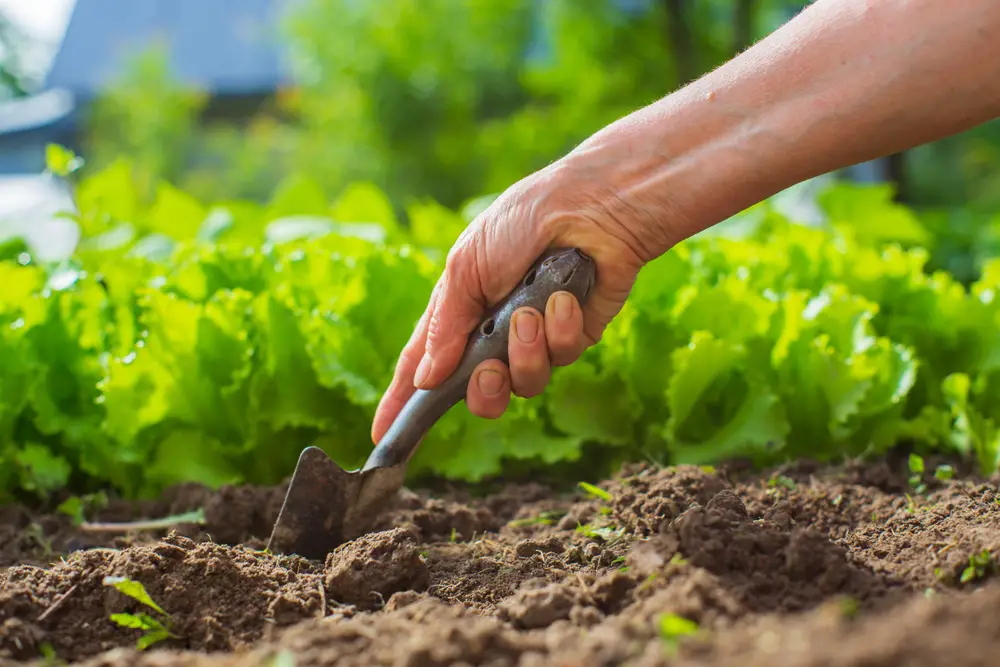
The number of frost-free days typically available to you defines your growing zone. These recommendations are provided as guidelines to show approximately how many days your growing season is.
Since the weather can change from year to year, it is equally important for you to choose the recommended varieties for your area as it is to know when it is the right time to plant them.
As explained above, this relates to the temperature needs of each plant, but also how long each plant needs to produce the vegetables you want to grow.
If the number of days to maturity for the vegetables you want to grow is more than (or even close to) the number of frost-free days in your hardiness zone, you will want to transplant seedlings of that plant to your garden instead of planting the seeds directly in your garden.
You can do this either by purchasing the seedlings or starting them indoors on your own.
Planting seedlings allows you to begin growing vegetables that take longer to mature indoors and easily protect them from spring frost damage.
Simply wait to transplant them to your garden until temperatures have warmed enough to know the risk of frost has passed. You’ll know this through a combination of your hardiness zone recommendation and watching the current weather trends.
Feel free to ask other gardeners as well. Most gardeners love the opportunity to share what has worked for them and hear about what you might be doing.
If you are keen to begin planting in your garden as soon as possible, focus on sowing crops that are able to tolerate cool temperatures. Carrots, beets, spinach, peas, lettuce, kale, and radishes are all good plants you can sow successfully, even before those last frosts have entirely abated.
You can even help them along by choosing to cover them.
3 – Cover Your Vegetables
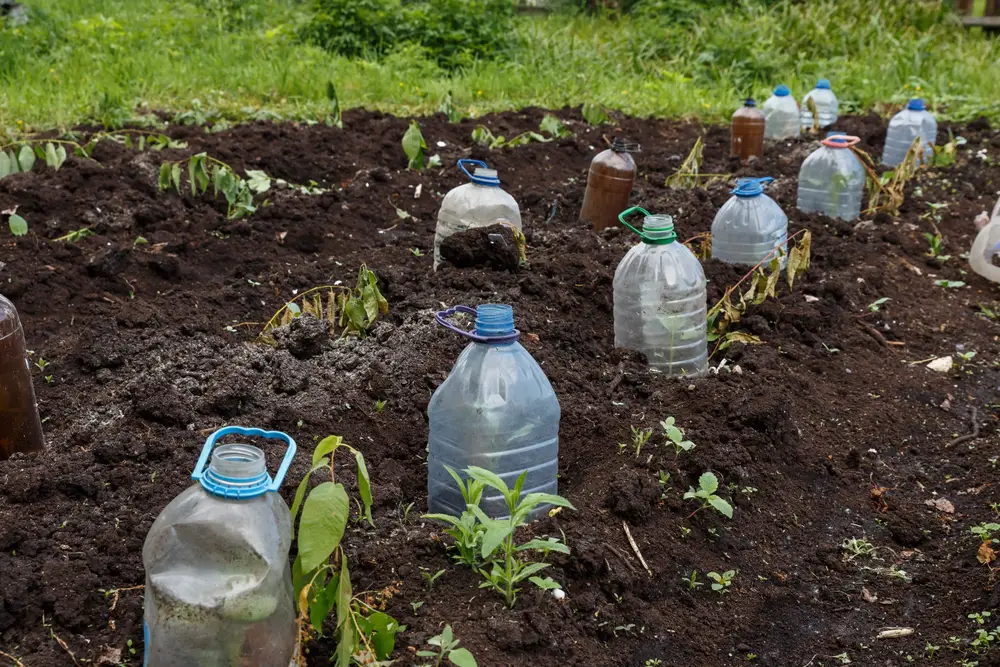
Covering your vegetables (or any plants) can protect them during a “light frost.” Light frosts see temperatures dip below freezing for a few hours, then return to above freezing.
“Hard frosts” or “killing frosts” are a level above that. Covers are, unfortunately, no guarantee to give plants adequate protection. These frosts see colder temperatures last for longer periods. This freezes and expands the water in plant cells, which eventually ruptures the cell walls.
You may have already figured this out (or experienced this yourself), but plants don’t recover from this.
In some instances, this won’t affect the entire plant, and you can remove the damage. But generally, killing frosts earn their name.
The damage done depends on the time of season and how tolerant the plant is to cold temperatures.
Many gardeners choose to prolong spring planting to avoid risking frost damage altogether.
Tomatoes, for example, are known as tender plants that need heat. If they survived exposure to frost in the spring, their growth could be stunted for several weeks. They might also show a variety of chilling injuries, such as curled or damaged leaves. In the fall, frost can easily damage the tomatoes to an extent they can’t be used.
This is why I opted to harvest mine early, even though they were unripe.
Frost can be catastrophic for growers, so we do what we can to protect our plants. Though the covering methods of protection are often temporary, they are accessible and effective.
Floating Row Cover (And Old Sheets)

Floating row cover is a lightweight polyester or polypropylene material designed for you to drape (or “float”) over your vegetables. When used properly, the cover can keep the enclosed plants a few degrees warmer than outside of the cover. This prevents frost damage.
Though I do have some floating row cover, I also have a store of old bedsheets I use in the same way. Both work. I don’t need them every year, but I am grateful I have them when the need arises.
In the spring, when plants are small, I lay the cover out over top of plants if temperatures dip. As long as it is somehow attached to the ground or the bed it is protecting at the perimeter, it will keep the plants underneath safe by slightly raising the temperature.
I will usually grab whatever is in reach (rocks, sticks, etc.) to weigh the cover down at its edges.
In autumn, when plants are bigger and often full of ripening produce, growers need a structure to drape the fabric over in addition to securing the bottom. When I use this method, I rely on the support mechanisms I have installed to aid my plants while growing: stakes, trellises, cages, etc., to hold the fabric and, again, weigh the ends to the ground.
This protects plants against light frost. If I feel there is any risk of damage to the vegetables I have been growing all season long, I harvest them.
Cloches
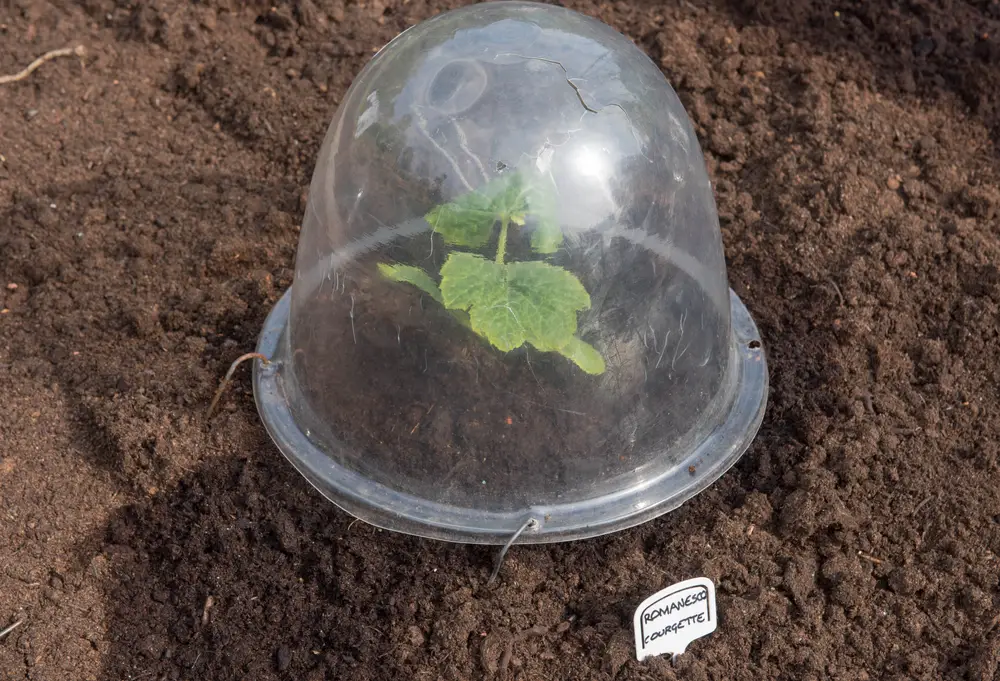
Cloches are another tool you want to have in your garden shed (or wherever you store your garden tools). Plant cloches are solid coverings you temporarily place over your plants to protect them from outside elements. The term originates from the French word for “bell,” which they resemble.
Think of a cloche as a miniature greenhouse. Anchored into the ground, they absorb light, hold heat, and protect your vegetables from damage from frost, wind, hail, heavy rains, etc.
You can expect a cloche to create an environment 2-5 degrees warmer than outside of it. This is often enough to protect against frost damage.
During daylight, underneath cloches can become very hot. If you want to use them, you must ensure they can vent heat or remove them altogether.
At one time, plant cloches were glass. Now, they are mostly plastic.
Understandably, you may have some negative feelings toward plastic.
However, you can upcycle plastic milk jugs, water cooler containers, and the like into plant cloches for you to use and reuse as long as you want. Simply cut off the bottom off and place the container over top of the plant(s) you are trying to protect. The vent is the opening of the container.
I’ve even seen gardeners use upside-down plastic planters to protect from frost or hail. You would need to remove these each day.
My cloches are white plastic sheeting. They fold together to fit over plants, allow some light through, and still lay flat for storage. I can open the tops to vent while still keeping them around the plants.
I typically use my cloches to build a temporary microclimate around my tender plants (like tomatoes) in the spring. Doing so allows me to move them outside a couple of weeks sooner than I would otherwise.
Unfortunately, my cloches lose their effectiveness beyond spring because the plants simply get too big for the cloches to cover. They can accommodate 2-foot plants, but my plants will outgrow this capacity.
My cloches were gifts. I don’t mind using them, especially in the spring, but I wouldn’t necessarily seek them out. This is simply my preference. I know plenty of vegetable gardeners who love using them.
Cold Frames
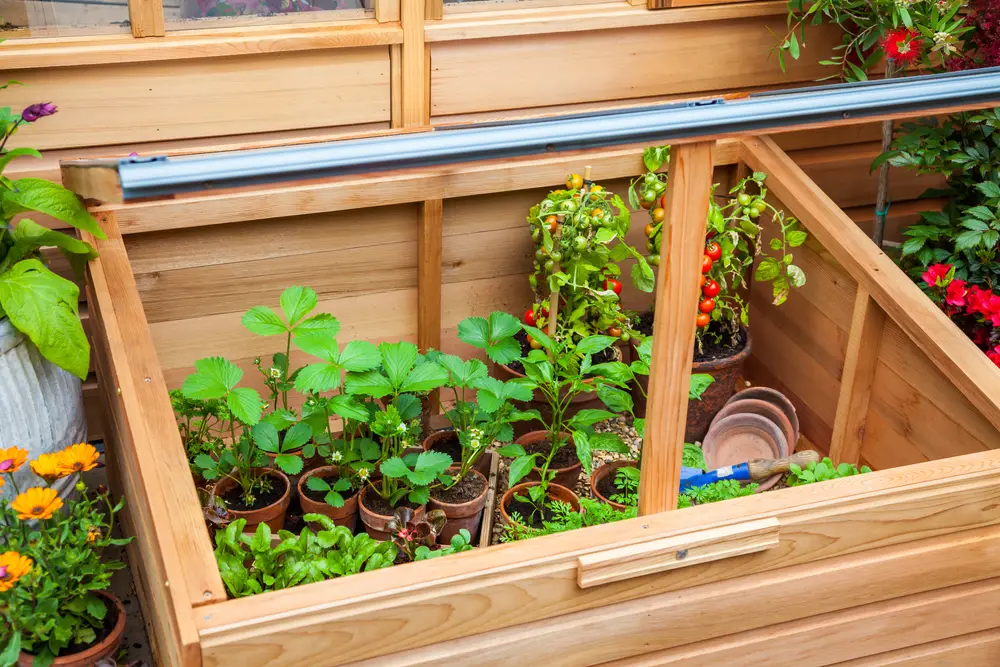
If you are interested in frost protection beyond short periods of time, you will want to look into cold frames.
Cold frames are framed, transparent coverings for your vegetable garden (or other gardens). Original cold frames use a wood frame with fiberglass panels to accomplish this. They resemble a bottomless box with a lid.
They work the same way a greenhouse does but cost significantly less.
Throughout the day, the frame and soil inside it absorb energy from the sun (light). The accumulated energy is released as heat as the evening progresses and cools.
Placing a cold frame over your garden bed can significantly increase the temperature.
Cold frames are semi-permanent, though. Placed over top of existing beds, they provide enough heat to begin gardening early in the spring and well into the fall in cold climates.
Gardeners in cold growing zones who want to grow vegetables all year long dig their beds to be lower than the rest of the ground. When they place their cold frame over top, part of its side walls are also lower than the surrounding ground surface. This provides insulation from the elements on all sides but the top and also reduces the amount of space needing heating by limiting height. As such, you’re limited to planting varieties those constraints can accommodate.
Most cold frames are built to easily vent, though this will require you to manually open and close the top.
Cold frames are best used by gardeners interested in three or four season vegetable gardening.
4 – Water
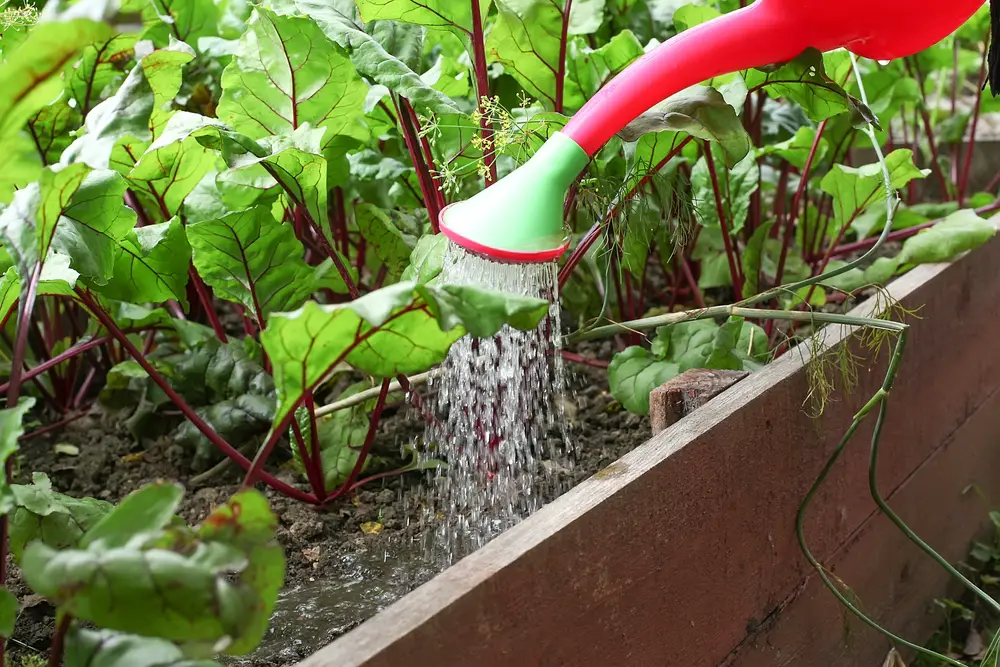
Used in conjunction with other protective measures, water can help protect plants from light frost in some instances. This is due primarily to water’s capacity to absorb and hold heat from the sun.
If the soil is holding a bit of water (soaking is not the goal here), it has more capacity to hold heat, which will, in turn, protect your plants.
If a hard frost is imminent or ambient temperatures are below 40 °F (4.5 °C), it isn’t time to water.
Additionally, if you do choose to water, ensure it is kept underneath the foliage of your plants to avoid encouraging frost forming right on your plants.
5 – Mulch
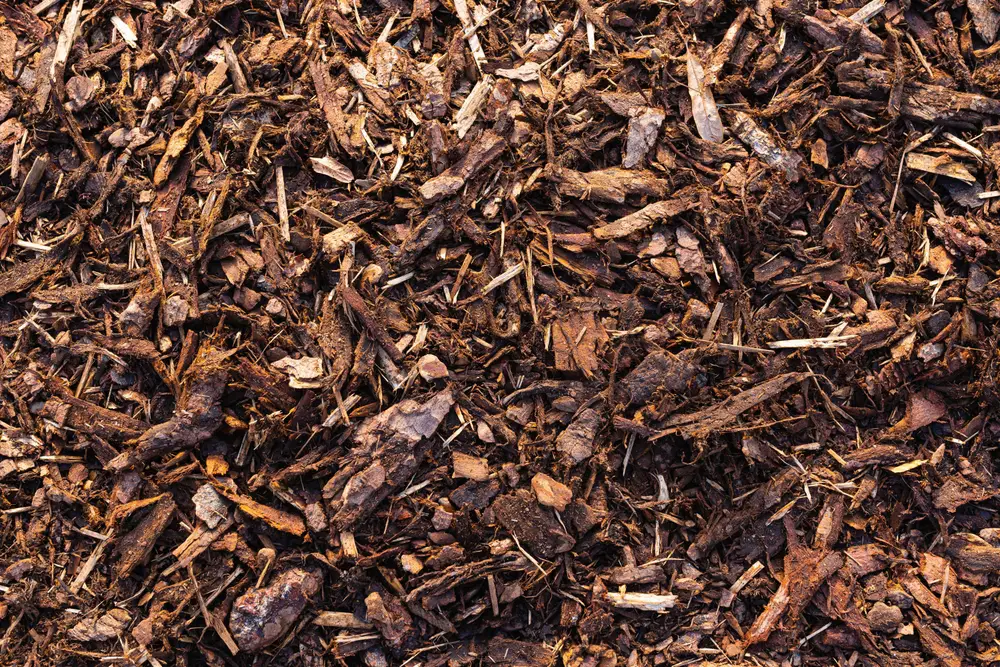
Mulching, or placing a layer of organic material around the base of plants, works to retain water and heat. It also works as a barrier and insulator for plant roots. It takes soil temperatures significantly longer to drop than ambient temperatures, even more so with mulch, because mulch is decomposing (a process that releases heat).
Gardeners commonly use mulching to regulate temperatures and build soil. Though you would not be able to maximize its benefit as quickly as some of the other frost protection methods outlined here, I am including it because it is a practice you can plan to incorporate at any time.


